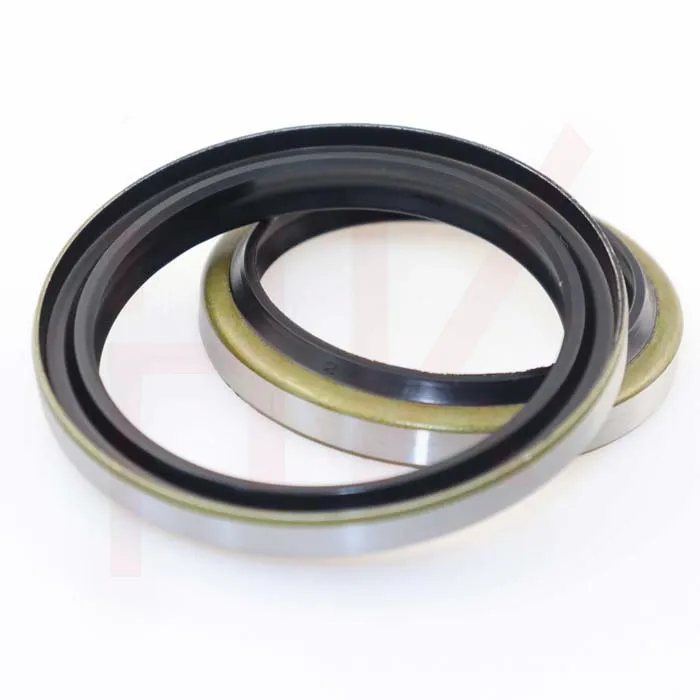Zář . 05, 2024 04:35 Back to list
hydraulic seal replacement
Hydraulic Seal Replacement A Comprehensive Guide
Hydraulic systems are crucial components in various machinery, from construction equipment to industrial machinery. One of the key elements of these systems is the hydraulic seal, which plays a vital role in preventing leaks and maintaining pressure within the system. Over time, hydraulic seals can wear out due to factors such as friction, temperature changes, and exposure to various fluids. This article will discuss the importance of hydraulic seal maintenance and provide a detailed guide on how to replace a hydraulic seal effectively.
Importance of Hydraulic Seals
Hydraulic seals are designed to provide a barrier that keeps hydraulic fluid contained while allowing for the movement of components within a hydraulic system. Their primary functions include
1. Preventing Leaks Seals prevent hydraulic fluid from escaping, which is crucial for maintaining system efficiency and safety. 2. Maintaining Pressure A proper seal ensures that the desired pressure levels are retained within the system, which is essential for optimal performance.
3. Minimizing Contamination Seals help keep foreign contaminants out of the hydraulic system, prolonging the life of the machinery.
Signs of Worn Hydraulic Seals
Recognizing the signs of a failing hydraulic seal is essential to avoid costly repairs and downtime
. Common indicators include- Fluid Leaks Visible leaks around the hydraulic cylinder or fittings. - Loss of Pressure A gradual decrease in pressure readings can signal a compromised seal. - Increased Noise Unusual sounds during operation may indicate that seals are not functioning correctly, leading to hydraulic fluid turbulence.
Steps for Hydraulic Seal Replacement
hydraulic seal replacement

Replacing a hydraulic seal can be a straightforward process if approached methodically. Here’s a step-by-step guide to ensure a successful replacement
1. Safety First Before beginning, ensure the machinery is turned off and depressurized. Always wear appropriate safety gear.
2. Disassemble the Cylinder Carefully remove the hydraulic cylinder from the machinery. Use a wrench and other tools to detach any bolts or fasteners.
3. Remove the Old Seal Once the cylinder is disassembled, locate the old seal and carefully remove it. Be cautious not to damage the sealing surfaces.
4. Inspect and Clean Check the cylinder and other components for wear or damage. Clean the surfaces thoroughly to prevent contamination from affecting the new seal.
5. Install the New Seal Choose a seal that matches the specifications of the old one. Lubricate the new seal lightly with hydraulic fluid before installation to facilitate a proper fit.
6. Reassemble the Cylinder Carefully reassemble the hydraulic cylinder and ensure all parts are secured correctly. Double-check for any potential leaks.
7. Test the System Once reassembled, reconnect the cylinder to the machinery and restore pressure gradually. Monitor the system for any leaks or unusual behavior.
Conclusion
Regular maintenance and timely replacement of hydraulic seals are vital for ensuring the longevity and efficiency of hydraulic systems. By understanding the signs of wear and following the proper replacement procedures, you can keep your hydraulic machinery running smoothly and efficiently. Addressing seal issues promptly can save time, money, and avoid potential safety hazards in the workplace.
-
Cassette Seal 15018014.5/16 Hub Oil Seal | OEM Quality 000051785
NewsAug.31,2025
-
DKBI Hydraulic Wiper Seal 20x32x6/9 | Dustproof & Standard Oil Seal
NewsAug.30,2025
-
Eaton 5423 6423 Motor Repair Seal Kit: Premium Quality & Fit
NewsAug.29,2025
-
25x47x7 High Quality Tcv Oil Seal for Hydraulic Pump
NewsAug.28,2025
-
Wiper Oil Seal: Our Commitment to Clean Hydraulics
NewsAug.13,2025
-
Hydraulic Oil Seal for Self Discharging Cars
NewsAug.13,2025
-
Hub Oil Seal for Agricultural Tractor Hubs
NewsAug.13,2025
Products categories
















